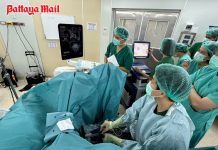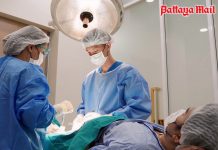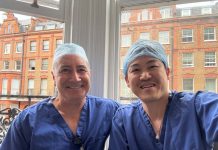The good book states that the term ‘diverticular disease’ comes from the Latin word ‘diverticulum’ which means a “small diversion from the normal path”. However, the late Max Hickey, my old Professor of Anatomy, claimed it was Latin for a “Wayside Inn of Ill Repute”. His definition was much more memorable.
However, a diverticulum as it refers to you and me, is a small bleb or ‘pouch’ that pops through from the inside to the outside of the colon, and usually seen in the descending colon which leads down to the rectum and anus.
When you have a few of these diverticulae (plural of diverticulum – Latin) we say you have the condition called ‘diverticulosis’. This condition, on its own, does not produce any symptoms, so you do not know if you have it. A bit like early stages of hypertension or even diabetes.
When diverticulosis causes symptoms, it can do so in one of two ways: first the pouches can rupture into the abdominal cavity, causing localized irritation and inflammation or produce an abscess. This inflamed diverticulosis is now called ‘acute ‘diverticulitis’ (remember when we put “-itis” on the end of a word it means inflammation). Patients who have diverticulitis often will usually present with a sudden onset of pain located in the lower left part of the abdomen over the sigmoid colon. It is frequently exquisitely tender and is associated with fever and a high white blood cell count.
Secondly, the diverticulae can begin to bleed to produce significant amounts of rectal bleeding. This can also be painless, just to confuse your gastroenterologist!
So who gets it? If you are Caucasian and you are over 65, then you have a 50 percent chance of having it already. The reason given for this is the lack of bulk present in the diet of industrialized countries allowing muscle contractions to create localized areas of high pressure allowing diverticulae to form. Some pundits say that the pressure created by muscle contractions of the left side (sigmoid) of the colon are considerably greater than those of the right side (ascending colon). This could explain why diverticulae are more common on the left than right side of the colon. However, this does not explain why Asians get diverticulae on the right side. (Ah, the mysterious East! Or perhaps the theory is wrong!)
Acute diverticulitis is usually diagnosed by the typical history and a physical examination demonstrating tenderness over the sigmoid colon (left lower part of the Caucasian abdomen). Fever and a high white blood cell count generally confirms the diagnosis. A CT scan or ultrasound of the lower abdomen can be very helpful in showing an inflammatory mass over the sigmoid colon.
If the presenting symptom is rectal bleeding, this can be a bit more difficult to diagnose and is frequently a “diagnosis of exclusion” by which we can find no other cause for the bleeding. Fortunately this is not common, and less than five percent of people with diverticular disease of the colon will bleed.
Acute diverticulitis is treated with antibiotics for 7-10 days. These antibiotics frequently have to be given intravenously. Diet is often severely limited during the first few days of treatment. Most patients will recover completely, but occasionally surgery is necessary in order to drain all the infected material and completely empty an abscess cavity.
So can you do something to stop your diverticulosis becoming diverticulitis? It hinges on eating more fiber. High-fiber foods, such as fresh fruits and vegetables and whole grains, soften waste and help it pass more quickly through your colon. This reduces pressure inside your digestive tract. Aim for 25 to 30 gm of fiber each day. Fiber works by absorbing water and increasing the soft, bulky waste in your colon, but if you do not drink enough liquid to replace what is absorbed, fiber can be constipating.
Respond to bowel urges. Do not delay. Delaying bowel movements leads to harder stools that require more force to pass and increased pressure within your colon.
Finally, exercise regularly. Exercise promotes normal bowel function and reduces pressure inside your colon. Try to exercise at least 30 minutes on most days. At least try!




